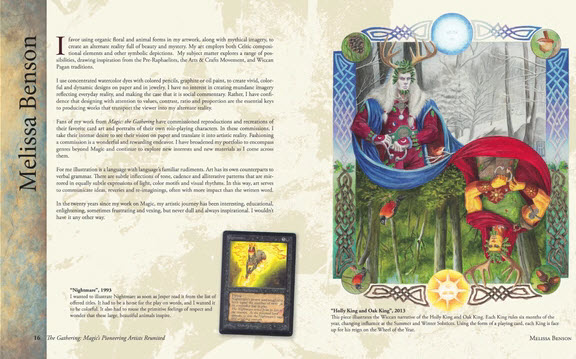I think we can agree that gaming, all gaming, is a geeky pastime. It has its devoted fans, inside jokes, a niche-but-dedicated market, and it’s something that society as a whole sometimes looks at with an eyebrow cocked. We love it, and even if we don’t always agree on choice or style of play, we can (usually) appreciate the fact that gamers, all gamers, share that same enjoyment that games provide. We cannot lay claim to geekdom entirely though, no. Any genre has their own geek culture. Anime geeks, science geeks, music geeks, tech geeks, literary geeks (and the subsets of each) just to name a few. If there is a vibrant enough community for a particular thing, geekdom can happen. And it should be celebrated.
That brings us to Magic. Magic: the Gathering, is the powerhouse of the trading card game world. Magic is to card games what Ebay is to online auctions: sure, there are alternatives, but everyone knows there most of the traffic flows. But it didn’t used to be like that. A number of years ago – 20, in fact – Magic was just a radically experimental idea by an unknown mathematician who took a chance with a little known gaming company known as Wizards of the Coast. Back then, they were like any other project you may see on Kickstarter today: little money, unknown but to a few, and no guarantee it’ll succeed.
It took a little bit of steam at first, but once it caught on, it was hard to stop. Much of that goes to the fantastic innovation and mechanics that Magic offered as a game, coupled with a bit of luck and the fact it had no competition for what it was offering.
And the art.
Yes, the art.
In today’s era, Magic gets more praise in general for its stunning artistry and top-notch picture detail than for its mechanics, even for cards that could be inconsequential from a gameplay standpoint. But that’s not to say that the earliest artists didn’t offer the same thing. The exact same thing. Some of the most memorable cards even today are remembered fondly not only for what they offered to the game, but for the artwork that accompanied them. The artists were all different. Some were established; many were unknowns. Some liked watercolor, some liked oil, and still others preferred ink. Some artists liked to depict cards in a more direct representation, while others were more avant-garde. There wasn’t the same uniformity of style there is in the game now, since it was a less refined era in the game’s history. Yet it allowed for artists of all different kinds to be seen, be expressed, and as it turns out, be remembered.
Players who still enjoy the game, or have left and come back, occasionally wax nostalgic about the early days and what it was offering, done both from a gaming standpoint and recalling that era in the game’s history where lots of strange things were acceptable. As we have several decades-long Magic players here, we fully admit we are the same at times. It’s hardly like today’s work is bad – almost every metric says the game has never been better. Rather, then it was just… different. A good different. A kind of different forgotten by many, yet still cherished when confronted. And now we have The Gathering to help with that.
The Gathering is not a game. Instead, The Gathering is a well-crafted compilation book of around 100 pages by many of the artists of the game’s formidable years, without whom it may not have been nearly as successful. Some artists retouch their iconic works. Others offer homages, or show off newer pieces. Each artist involved is celebrated through stories, a little bit of history, and some of the cards they’ll always be attributed to. Pages like this:
In 1993, it was lightning in a bottle for the artists, for Mr. Garfield, and for the game of Magic. In the 20th anniversary year, this won’t be the last time that we look back at where the game came from to where it is now. What’s remarkable is that this project was undertaken by the artists themselves. And with good reason, because we all know Hasbro wasn’t going to do it for them. You don’t have to be a fan of the game to be an art geek. If you love artwork, that alone may get you to check out their Kickstarter. But for the older players, the former players, and the inquisitive minds of those who weren’t around then to learn about the game’s past (with pictures!), The Gathering offers a whole lot of something more.

